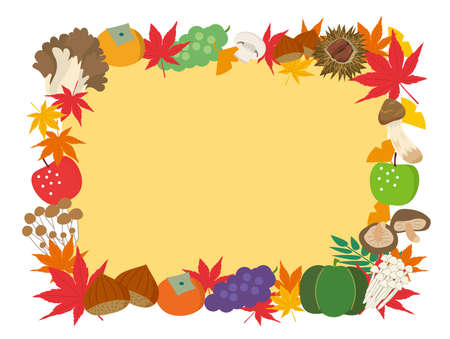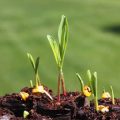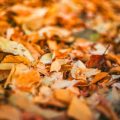Introduction to September Gardening
September marks a pivotal moment for gardeners across the United States, signaling the transition from summer’s abundance to the promise of fall renewal. As the days grow shorter and temperatures begin to cool, this month offers an ideal window for planting, renovating lawns, and nurturing landscapes in ways that support both beauty and biodiversity. For American gardeners who care deeply about environmental impact, September is more than just a time for seasonal chores—it’s an opportunity to embrace eco-friendly and sustainable practices that enrich soil health, conserve water, and protect local wildlife. By approaching fall gardening with intention and mindfulness, you can transform your yard into a resilient ecosystem that thrives year after year.
Preparing Your Garden Beds for Fall
As September rolls in, it’s the perfect time to transition your garden beds from summer’s bounty to a thriving fall landscape. Preparing your garden now not only maximizes your autumn harvest but also supports sustainable gardening practices that benefit both your soil and the environment. Here’s how to get started:
Clear Out Summer Crops Responsibly
Begin by removing any spent summer crops, weeds, or plant debris. Compost healthy plant material to return nutrients to the earth, but be sure to dispose of diseased plants separately to prevent future problems. This step helps reduce pest populations and makes way for new growth.
Enrich Your Soil with Organic Matter
Healthy soil is the foundation of a productive fall garden. Spread a generous layer of compost or well-rotted manure over your beds and gently work it into the top few inches of soil. This not only boosts soil fertility but also improves water retention and supports beneficial soil microbes. Consider conducting a simple at-home soil test to check pH levels and nutrient content before amending further.
Compost Options for Soil Enrichment
| Material | Benefits | Sustainability Tips |
|---|---|---|
| Homemade Compost | Rich in nutrients, reduces food waste | Use kitchen scraps & yard waste for closed-loop sustainability |
| Leaf Mold | Improves moisture retention, adds organic matter | Collect fallen leaves locally every autumn |
| Aged Manure | Adds nitrogen, enhances microbial activity | Sourced from nearby farms to reduce carbon footprint |
| Commercial Organic Compost | Convenient, balanced nutrients | Select local or certified organic products when possible |
Create an Eco-Friendly Bed Layout
When reshaping your garden beds for fall planting, consider adding mulched pathways and raised rows to improve drainage and minimize soil compaction. Mulching with straw, shredded leaves, or untreated wood chips helps conserve moisture, suppresses weeds naturally, and adds back organic matter as it breaks down.
Sustainable Gardening Tip:
Rotate crops each season to maintain soil health and prevent disease cycles. Avoid synthetic fertilizers—opt for slow-release organic amendments that support long-term ecosystem balance.
By following these practical steps in September, you set your garden up for healthy, resilient growth this fall while nurturing the earth for seasons to come.

3. Best Fall Plants and Native Flowers to Plant Now
September is the perfect time to revitalize your garden with cool-season vegetables, aromatic herbs, and native perennials that thrive in American fall climates. Choosing the right plants not only ensures a successful harvest but also supports local pollinators and fosters a more resilient ecosystem.
Top Vegetables for September Planting
As summer crops wind down, now’s your chance to sow seeds or transplant seedlings of hardy vegetables that flourish as temperatures drop. Consider planting:
- Kale – Cold-tolerant and nutrient-dense, kale can be harvested well into winter in most regions.
- Spinach – Quick-growing and frost-resistant, spinach is a great green for both salads and cooking.
- Radishes – These root veggies mature rapidly, making them an ideal choice for fall gardens.
- Carrots – Cooler weather enhances their sweetness; sow seeds now for late autumn harvests.
Herbs That Love the Cooler Season
September is also an excellent month to plant culinary herbs. Many thrive in cooler temperatures and can even be brought indoors as winter approaches:
- Cilantro – Prefers the mild fall climate and bolts less quickly than in summer heat.
- Parsley – Withstands light frosts and adds fresh flavor all season long.
- Dill – Grows quickly and attracts beneficial insects like ladybugs and pollinators.
Native Perennials for Pollinator Support
Planting native perennials not only adds lasting beauty to your landscape but also provides critical habitat and food sources for bees, butterflies, and birds. Here are some favorites adapted to many U.S. regions:
- Echinacea (Coneflower) – Drought-tolerant with vibrant blooms that attract a variety of pollinators.
- Aster – Blooms late into the season, offering nectar when other flowers fade.
- Goldenrod – A vital late-season food source for migrating monarchs and native bees.
Sustainable Gardening Tip:
Selecting regionally adapted varieties minimizes water use, reduces maintenance, and increases biodiversity. Choose seeds from local nurseries or native plant sales for best results.
Create a Pollinator Patch
Dedicating even a small corner of your yard to native wildflowers can make a meaningful difference for at-risk species. Mix annuals with perennials for continuous color and habitat throughout the seasons.
4. Lawn Renovation and Overseeding Techniques
September is an ideal month to breathe new life into tired or thinning lawns, especially in most U.S. regions where cool-season grasses thrive. By focusing on organic renovation methods, you can restore your turf’s health while nurturing biodiversity and reducing chemical inputs. Here’s how to approach eco-friendly lawn renovation, overseeding, and soil improvement for a resilient, green yard.
Organic Lawn Renovation Steps
Skip synthetic herbicides and fertilizers; instead, choose natural strategies that foster soil and grass health:
| Step | Sustainable Practice |
|---|---|
| 1. Assess & Remove Thatch | Use a rake or dethatching tool to remove excessive thatch naturally—less than ½ inch is ideal for healthy lawns. |
| 2. Aerate the Soil | Rent or borrow a core aerator to reduce compaction and improve water infiltration without chemicals. |
| 3. Amend with Compost | Top-dress thin areas with ¼ inch of screened compost to boost microbial activity and organic matter content. |
Eco-Friendly Overseeding Tips
- Select Regionally Appropriate Grass Seed: Choose drought-tolerant, disease-resistant varieties suited to your climate (e.g., fescues or bluegrasses for northern states; buffalograss or bermudagrass blends for southern lawns).
- Sow Evenly: Use a broadcast spreader for uniform coverage, then lightly rake seeds into the soil surface for optimal contact.
- Water Wisely: Mist newly seeded areas daily until germination, then gradually reduce frequency to encourage deep root growth—always early morning to minimize evaporation.
Soil Improvement Methods That Support Sustainability
- Add Organic Mulch: After seeding, apply a thin layer of straw or shredded leaves to retain moisture and protect seedlings.
- Avoid Synthetic Fertilizers: Instead, use slow-release, organic fertilizers like compost tea or alfalfa meal.
- Mow High: Keep mower blades at 3-4 inches to shade roots, conserve water, and discourage weeds naturally.
The Environmental Benefits of Organic Practices
Adopting these techniques not only revives your lawn but also supports pollinators, reduces runoff pollution, and builds long-term soil resilience—key steps toward a more sustainable American landscape this fall.
5. Water-Wise Gardening and Irrigation Tips
As autumn settles in, making sustainable choices in your garden is more important than ever. September’s cooler temperatures offer an ideal window to establish water-wise habits that benefit both your landscape and the environment. Here are practical strategies for conserving water while maintaining a thriving fall garden and lawn.
Efficient Irrigation Methods
Switching from overhead sprinklers to drip irrigation or soaker hoses can significantly reduce water waste by delivering moisture directly to plant roots where its needed most. Water early in the morning to minimize evaporation, and adjust your irrigation system to align with shorter fall days and natural rainfall patterns common across many American regions.
The Power of Mulching
Applying a generous layer of organic mulch around your plants and over your lawn can help retain soil moisture, suppress weeds, and regulate soil temperature as fall nights grow cooler. Consider locally-sourced materials such as shredded leaves, pine needles, or wood chips—these not only conserve water but also nourish the soil as they break down.
Choosing Drought-Tolerant Plants
Fall is a great time to introduce native and drought-tolerant species that require less frequent watering once established. Opt for perennials like coneflower, black-eyed Susan, or ornamental grasses that thrive in various U.S. climates while supporting local pollinators. These tough plants reduce your dependence on supplemental irrigation throughout the season and beyond.
Smart Lawn Renovation
If you’re renovating your lawn this September, select grass seed blends tailored for your region’s climate—such as tall fescue or buffalo grass—that are naturally resilient to drought conditions. Overseed thin spots with these hardy varieties and top-dress with compost to enhance moisture retention and encourage deeper root growth.
Practical Conservation Habits
Monitor soil moisture before watering and use rain barrels to collect runoff for garden use. By combining efficient irrigation, strategic mulching, and smart plant choices, you’ll create a beautiful fall landscape that honors water conservation—a win for both your home and the planet.
6. Eco-Friendly Garden Cleanup and Composting
As September arrives, its the perfect time to give your garden a sustainable refresh. Instead of bagging up leaves and plant debris for landfill, embrace eco-friendly cleanup methods that benefit both your landscape and the planet. By composting garden waste, you not only reduce your environmental footprint but also create nutrient-rich material to feed your soil throughout the year.
Why Choose Sustainable Cleanup?
Conventional cleanup often means tossing organic matter into trash bags, where it ends up in landfills and contributes to methane emissions. With sustainable practices, every bit of fallen leaf, spent flower, or grass clipping becomes a resource. This keeps your yard healthier and supports a circular approach to gardening.
Composting: Turning Waste Into Wealth
Start by collecting healthy plant material—leaves, pruned branches, grass clippings, and vegetable scraps. Layer these with brown materials like dried leaves or shredded newspaper to balance carbon and nitrogen. Turn your compost pile regularly and keep it moist but not soggy. In a few months, youll have dark, crumbly compost ready to enrich garden beds for fall planting or lawn renovation projects.
Tips for Eco-Conscious Gardeners
– Leave some leaf litter around shrubs and trees as natural mulch and wildlife habitat.
– Avoid composting diseased plants or weeds that have gone to seed.
– Reuse larger branches as borders for garden beds or pathways.
– Encourage family members to participate in sorting green waste versus trash.
– Share extra compost with neighbors or local community gardens.
By making eco-friendly cleanup and composting part of your September gardening routine, you’re investing in the long-term health of your soil and reducing the burden on our landfills—one small act at a time for a greener tomorrow.
7. Seasonal Wildlife Support and Habitat Creation
As autumn settles in, it’s the perfect time to turn your garden into a welcoming refuge for local wildlife. Supporting pollinators, birds, and beneficial insects not only enriches your outdoor space but also sustains essential ecosystems through the colder months. Here’s how you can make a positive impact this September while practicing eco-friendly gardening.
Create Pollinator-Friendly Zones
Keep late-blooming native flowers like goldenrod, asters, and coneflowers in your beds—they provide vital nectar for bees and butterflies preparing for winter. Avoid deadheading all spent blooms; seed heads offer food for birds and overwintering sites for insects.
Go Organic with Lawn Care
Reduce or eliminate chemical treatments on your lawn. Opt for organic fertilizers and compost, which are safer for pollinators and soil-dwelling organisms. Leaving small patches of clover or dandelion supports fall foragers when other blooms fade.
Offer Shelter and Nesting Spots
Pile fallen leaves in garden corners to create natural mulch and habitat for beetles, spiders, and solitary bees. Install birdhouses or leave snags (dead tree limbs) when safe—these act as cozy shelters for birds and small mammals during chilly nights.
Add Water Sources
A shallow birdbath with clean water invites birds and insects to hydrate and bathe. Remember to clean it regularly to prevent disease spread, especially during migration season when flocks pass through.
Plant for the Future
Fall is an ideal time to introduce native shrubs and berry-producing plants like serviceberry, viburnum, or elderberry. These species offer nutritious berries in late fall and winter, supporting both resident and migratory birds.
Embrace a “Wild Corner”
Dedicate a section of your yard to grow a bit wild—let grasses grow tall or scatter native wildflower seeds. This patchwork approach provides food, cover, and overwintering sites for beneficial bugs while cutting down on maintenance needs.
By thoughtfully adapting your garden this September, you contribute to a resilient habitat that nurtures wildlife year-round. Every sustainable choice helps weave your home landscape into the broader tapestry of environmental stewardship—right outside your back door.


